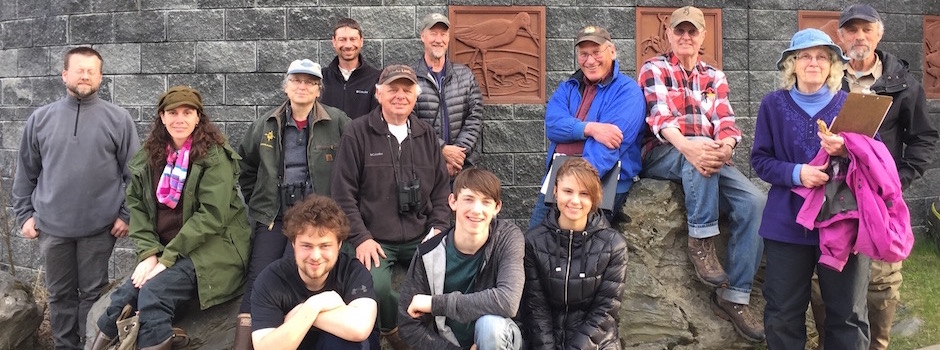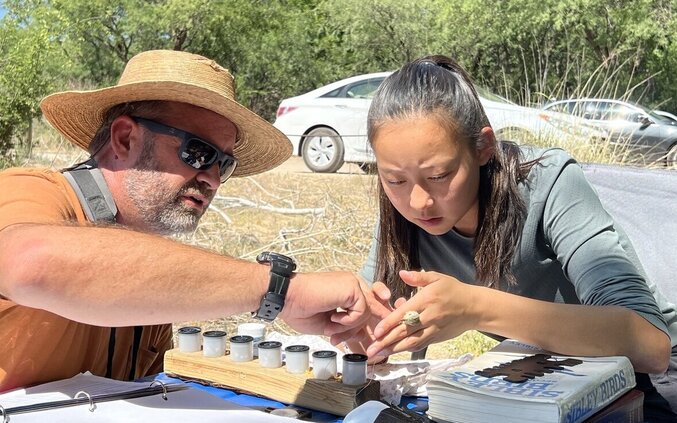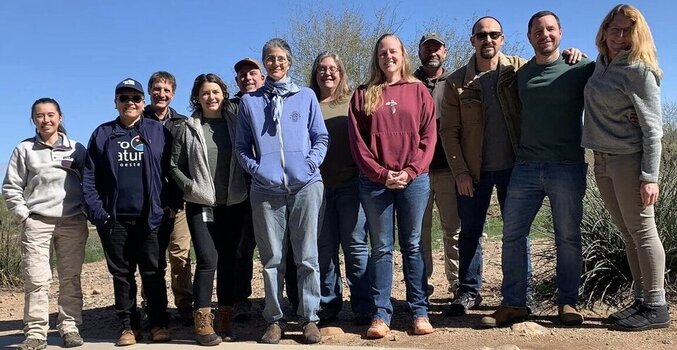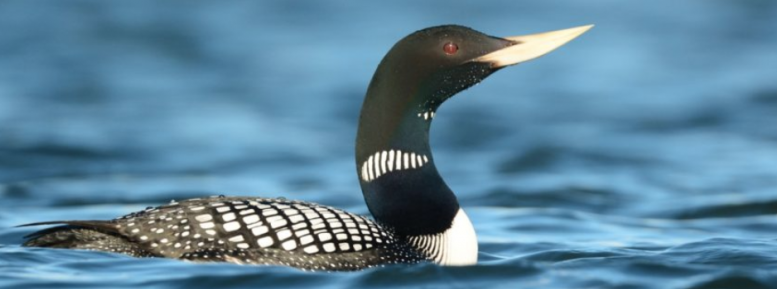Across the globe, citizen scientists are informing bird conservation by reporting on their local birds. The information sheds light on species distribution, population trends, and how landscape level changes are affecting bird habitats. Engaging in citizen science also promotes a greater understanding of the role and values of birds in the natural world.
The upcoming 2016 Global Big Day is one example of a very large-scale citizen science effort. Last year’s inaugural Global Big Day recorded 6,000 species from 135 countries—using 14,000 citizen volunteers! Other citizen science efforts, such as Audubon’s Christmas Bird Count, and the North American Breeding Bird Survey, are able to provide a long-term view of species distributions and population trends.
Citizen Science and Pacific Birds
Volunteers in the Pacific Birds region have many opportunities to get involved in citizen science projects. Here is a sampling:
- Bird Studies Canada manages several programs in British Columbia. The British Columbia Coastal Waterbird Survey (BCCWS) uses collected data to assess population changes and trends and to better understand the effects of human activity on coastal waterbirds. Explore results of the first twelve years of the BCCWS, and see other citizen science programs in British Columbia.
- The Pacific Flyway Shorebird Survey (PFSS) recruits volunteers to survey sites in Washington, Oregon and California over a few days during the winter. The PFSS contributes data to the Migratory Shorebird Project, the largest coordinated survey of wintering shorebirds on the Pacific Coast of the Americas spanning 10 countries from Canada to Peru.
- Birders with the Puget Sound Seabird Survey gather data on wintering seabird populations in Puget Sound and the Strait of Juan de Fuca. The observations create an annual snapshot of seabird density on more than 2,400 acres of nearshore saltwater habitat. It is the only land-based, multi-month survey in the Puget Sound region.
- The Audubon Society of Portland and partners are leading volunteers in monitoring Black Oystercatchers to better understand this species’ use of rocky intertidal habitats in and near Oregon’s marine reserves/protected areas. Black Oystercatchers are a species of conservation concern in Oregon and elsewhere.
- The Spot the Swallows Citizen Science program, coordinated by Point Defiance Zoo and Aquarium and the Washington Department of Fish and Wildlife (WDFW), engages local communities in monitoring and stewarding the Purple Martin, a species of concern in Washington. The data is used by WDFW to inform conservation efforts.
- In Alaska, Birds ‘n’ Bogs grew out of a concern for annual declines in boreal wetland species such as Olive-sided Flycatcher and Lesser Yellowlegs. Audubon Alaska and the University of Alaska’s Department of Geography and Environmental Studies are working with volunteers on their 4th year of surveys for seven birds of conservation concern in Anchorage and the Matanuska Valley.
- The Coastal Observation and Seabird Survey Team (COASST) is a multi-state citizen science project housed at the University of Washington. COASST volunteers conduct monthly surveys on a beach that has special meaning to them, collecting information on beachcast birds, marine debris and human activity. COASST provides a place-based authentic science learning experience and a strong data source for science, resource management and conservation.
Data Informs Local Conservation in Kachemak Bay
Kachemak Bay Birders in Alaska are in their 8th year monitoring shorebirds that stopover in Kachemak Bay during spring migration. Their long-term data helps detect population trends and advances local conservation efforts. Volunteers have collected data from six sites in the Homer Spit area as well as the Anchor and Kasilof Rivers, following up on monitoring done in the eighties and nineties. The data has recently helped make a strong case to significantly expand two existing Western Hemisphere Shorebird Reserve Network (WHSRN) sites to include most of Kachemak Bay. As George Matz of Kachemak Bay Birders said, “Homer has spoken; we value shorebirds. And our WHSRN designation connects other Pacific Coast states, provinces and nations so that we may share our stewardship responsibilities. We have much to share.”
eBird Northwest: Promoting Regional Citizen Science
eBird Northwest is a partnership among Washington Department of Fish and Wildlife, Klamath Bird Observatory, and the U.S. Fish and Wildlife Service Pacific Region Migratory Birds Program. The site provides regional content, identification tips, and citizen science opportunities to inform avian conservation. Structured by and connected to Cornell Ornithology Laboratory’s global eBird database, observations entered through eBird Northwest are part of this large, valuable data set. eBird Northwest is also the primary citizen science application for Avian Knowledge Northwest, a regional arm of the international Avian Knowledge Network.
By partnering with organizations in using eBird Northwest, WDFW gathers data about the state’s bird Species of Greatest Conservation Need, as defined in the Washington State Wildlife Action Plan. And partners benefit by learning more about avian conservation strategies and funding opportunities.
The Brown Pelican Citizen Science – Baja to Washington project is a collaboration among eBird, the U.S. Fish and Wildlife Service, state agencies and the Audubon network. The development of these highly regarded regional data and informational hubs is providing scientists access to greater sources of information, and enabling outreach across conservation communities.
The Power of Millions of Observations
Using millions of observations from the eBird citizen science database, the Cornell Lab of Ornithology has visualized bird migrations for 118 species in the Western Hemisphere. While the researchers are learning about the factors that affect migration routes, the rest of us get to see a powerful image that shows the birds in our local areas, and when and where the birds are moving. See the map and learn more.
Thank you to Wendy Connally, Citizen Science Coordinator with the Washington Department of Fish and Wildlife, and Lora Leschner, Pacific Birds Partnership Coordinator, for contributing to this story.
Editor’s note: To learn more about programs near you, contact Audubon state offices and local chapters, eBird Northwest, birding and conservation organizations, the U.S. Fish and Wildlife Service, Bird Studies Canada and state wildlife agencies.






